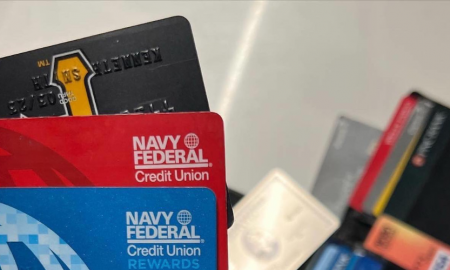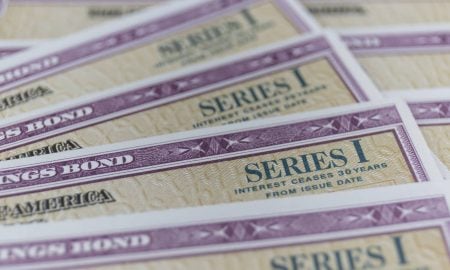
Do You have Have $10K+ in Your Savings Account? Here’s What You Should Do

If you have funds over $10k in your savings account, the next step is figuring out how to make that money work for you. Sitting on cash is a missed opportunity, especially when there are several smart ways to grow it. Instead of letting your money stay idle, explore options to maximize returns, reduce debt, or invest in your future.
1. Consider Paying Off High-Interest Debt
If you carry high-interest debt, like credit card balances or personal loans, using a portion of your savings account to pay down those debts could be one of the smartest financial moves. High-interest debt drains your finances, costing you more in interest than you could earn from savings or investments.

Karolina Kaboompics | Pexels | Use a portion of your savings account to pay down high-interest debts.
Take credit card debt, for instance. If you owe $5,000 at an interest rate of 20%, it can take years and thousands of dollars in interest payments to pay off. However, by using half of your savings to pay off that debt, you not only save money on interest but also free up cash flow. This extra money can then be redirected towards savings or investments, allowing you to build wealth faster.
2. Maximize Interest on Your Savings Account
Leaving your savings account in a basic savings account won’t give you much in return. The average interest rate on traditional savings accounts sits below 1%, which means your money barely grows. To truly make your savings count, consider switching to a high-yield savings account or even a certificate of deposit (CD). These accounts often offer much better annual percentage yields (APY), sometimes as high as 4-5%.
For example, depositing your $10,000 in a high-yield savings account with 5% APY for a year can yield $500 in interest. Over time, compound interest adds up, giving you even more without lifting a finger. If you continue to leave your savings in a high-interest account for three years, you could accumulate over $11,500. That’s more than $1,500 earned in interest for simply choosing where to keep your money.
3. Start Investing for Long-Term Growth
If you’ve paid off high-interest debt and built up an emergency fund, consider investing a portion of your savings account for long-term growth. While savings accounts provide a safe place for your money, they don’t offer the high returns that investments can.
Despite its ups and downs, the stock market offers average returns of about 7-10% annually over time. Investing $10,000 in stocks, mutual funds, or ETFs can help you grow that money significantly over the years. Even small investments can compound into substantial amounts if left untouched for long enough.
If retirement is your goal, you could funnel part of your savings into a tax-advantaged account like a 401(k) or IRA. These accounts not only help you grow your investments tax-free but also offer added benefits like employer matching if you’re contributing to a 401(k). And if you’re investing for a child’s future, consider a 529 college savings plan, which allows your money to grow tax-free as long as it’s used for education.
4. Build an Emergency Fund
An emergency fund is essential for financial security. If you don’t already have one, now is the time to allocate part of your savings toward this critical safety net. Aim to set aside three to six months’ worth of living expenses. This ensures you’re covered in job loss, medical emergencies, or other unexpected events.
An emergency fund gives peace of mind, knowing that you won’t need to dip into retirement accounts or use high-interest credit cards to cover surprise expenses. This strategy is all about protecting your financial future while keeping your other savings and investments intact.
More in Loans & Mortgages
-
How to Quit a Job Without Burning Bridges?
So, it’s time to say goodbye. Maybe you’ve landed your dream job, or perhaps you’re embarking on a new adventure. Whatever...
May 1, 2024 -
What Credit Bureau Does Navy Federal Use for Credit Card Approvals?
When it comes to choosing a credit card, understanding the behind-the-scenes processes can make a world of difference. So, you’re probably...
April 25, 2024 -
Has the FBI Arrested P Diddy? What You Need to Know About P Diddy Arrest
In recent developments that have captivated the public and media alike, the homes of Sean “Diddy” Combs, also known as Puff...
April 17, 2024 -
3 Easy Ways to Cash in Your Savings Bonds
Online With a TreasuryDirect Account In the age of digital banking and online investments, managing your savings bonds electronically is a...
April 11, 2024 -
How Employees Can Be Motivated By Their Own Work?
If there is one question every employee asks, it is: What makes a job fun and motivating? Well, this is not...
April 4, 2024 -
Why ATM Machines Are Still Irreplaceable Despite Modern Technologies
The landscape of banking and personal finance is rapidly transforming, leaving many to wonder about the future of ATM machines. In...
March 26, 2024 -
Taylor Kinney Returns in “Chicago Fire” Season 12 – Is Severide’s Character Losing Its Spark?
In “Chicago Fire,” Kelly Severide, played by the talented Taylor Kinney, has been a beacon of courage and commitment. However, as...
March 23, 2024 -
How to Dodge High APR on Personal Loans & Lock in the Best Rates
Securing a ‘good’ Annual Percentage Rate (APR) on your personal loan is no easy feat. It requires a deeper financial literacy....
March 14, 2024 -
6 Ways Chat GPT Can Help You Land Your Dream Job
We are living in a competitive job market, and standing out from the crowd is more crucial than ever. Enter Chat...
March 9, 2024
















You must be logged in to post a comment Login